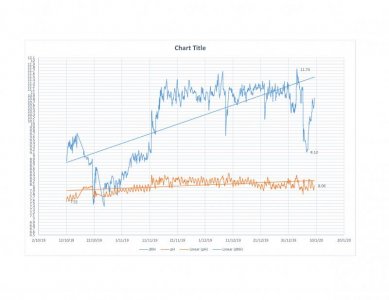dolphin_swim
New member
I have read Randy's article on raising ph and kalk dosing while checking into countless threads in an attempt to raise the ph on my tank. As I am restricted by space, I started out dosing a hypersaturated solution, i.e. with the slurry, controlled by a dosing pump every 20 mins throughout the day. It worked very well for a week -- corals that had no polyp extension for a long time started to show signs of life again; visible growth on sps happened almost overnight; colors enhanced; fishes swam peacefully without the occasional darting around as before.
After that first week, things start to fall apart as the dkh started to continuously climb. I got worried and tried to adjust the dosage, getting buckets of normal saturated solution into the living room (in a small apartment) in hopes to meet the demand and try to make things stable. I still ended up with a disaster, killing many of my beloved new corals.
Here's the rise and fall of the tank:

Tissue recessed on all corals, and I do not know whether it is caused by:
1) unstable alkalinity
2) unstable ph
3) unbalanced alk/cal/mag -- cal/mag were 440-450/1250-1350 for some time; today these dropped to 380/1050 (I suspect this dropped after a water change with natural sea water a few days ago)
4) alkalinity too high, nutrients too low -- no3 ~2.5-5 ppm (salifert); po4 3 ppb (Hanna phosphorus ULR). I have read used the reef calculator http://reef.diesyst.com/chemcalc/chemcalc.html which showed that balanced dKH for 450 ppm calcium is 4.45meq/l (12.46 dKH)
5) unstable salinity -- have been dosing at least 15L of kalk solution day to try to reach 8.3 (the number that resulted in happy corals), this dropped the salinity to 1.021, hence the water change which makes it now 1.023
6) something else
I have tried open windows and CO2 scrubber into the skimmer and neither had much effect on raising the pH. Also tried Seachem Reef Buffer yesterday, and as expected, it raised the dKH much more than the pH.
I would really appreciate advice from experts here so I can stop the killing :sad2:
After that first week, things start to fall apart as the dkh started to continuously climb. I got worried and tried to adjust the dosage, getting buckets of normal saturated solution into the living room (in a small apartment) in hopes to meet the demand and try to make things stable. I still ended up with a disaster, killing many of my beloved new corals.
Here's the rise and fall of the tank:

Tissue recessed on all corals, and I do not know whether it is caused by:
1) unstable alkalinity
2) unstable ph
3) unbalanced alk/cal/mag -- cal/mag were 440-450/1250-1350 for some time; today these dropped to 380/1050 (I suspect this dropped after a water change with natural sea water a few days ago)
4) alkalinity too high, nutrients too low -- no3 ~2.5-5 ppm (salifert); po4 3 ppb (Hanna phosphorus ULR). I have read used the reef calculator http://reef.diesyst.com/chemcalc/chemcalc.html which showed that balanced dKH for 450 ppm calcium is 4.45meq/l (12.46 dKH)
5) unstable salinity -- have been dosing at least 15L of kalk solution day to try to reach 8.3 (the number that resulted in happy corals), this dropped the salinity to 1.021, hence the water change which makes it now 1.023
6) something else
I have tried open windows and CO2 scrubber into the skimmer and neither had much effect on raising the pH. Also tried Seachem Reef Buffer yesterday, and as expected, it raised the dKH much more than the pH.
I would really appreciate advice from experts here so I can stop the killing :sad2:
